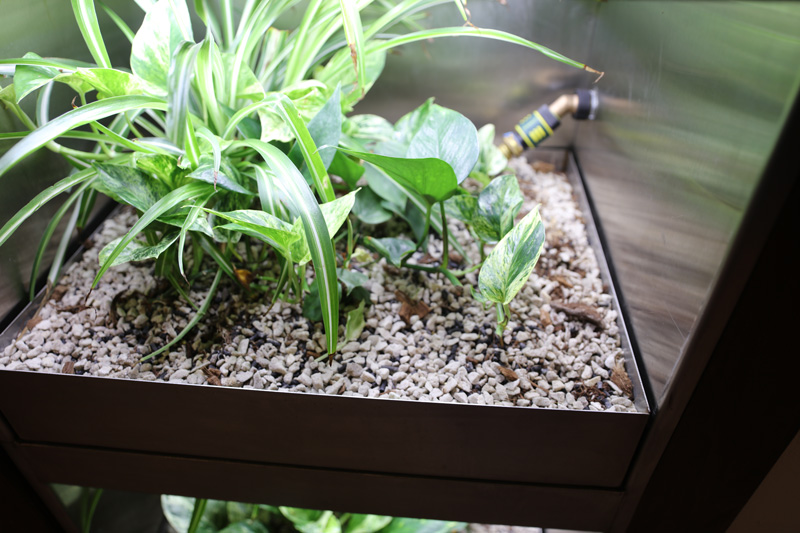
Homes of the future could have cleaner air and lower energy bills due to a Purdue team’s BioWall innovation involving the use of a living wall of air-cleaning plants.
“Over the past century there have been initiatives to create more airtight buildings that increase HVAC efficiency and reduce power consumption,” said Scott Massey, a Purdue senior majoring in mechanical engineering technology and member of the BioWall research team. “Unfortunately, the side effect of this trend is that is has reduced indoor air quality. The BioWall is a solution for that problem.”
The BioWall is an air filter consisting of shelves of plants built into a wall and attached to a home’s HVAC system. Built-in systems provide light and water. A fan behind the unit draws air into the BioWall and through the growth media where microbes in the plants’ roots process volatile organic compounds, or VOCs. The plants also remove carbon dioxide from the air. The cleaned air then returns to the home’s HVAC unit for heating or cooling.
The current prototype has been in place at the ReNEWW House since 2016. A joint venture between Purdue and Whirlpool Corp., the ReNEWW House – a retrofitted, net-zero energy, water and waste house – is a 1920s era home near the Purdue campus for graduate students to monitor a host of incorporated novel energy-saving technologies.
Data from the ReNEWW House shows the BioWall prototype has the potential to reduce HVAC energy consumption by up to 25 percent because less outside air is required for ventilation.